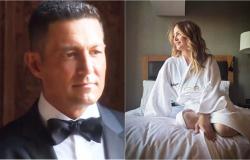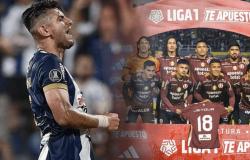The play of overlapping looks, but harmoniously and expressly combined, is triple. In origin, the works that inhabit the Prado. Then, reinterpretation and new … Presences that extract from them contemporary creators, mostly photographers and visual artists that make up the collection of the Friends of the Prado Foundation. And, finally, his meeting, from yesterday to September, with paintings, tapestries, objects and decorative arts pieces of the Caja Cantabria Foundation. The fruit is the exposure ‘symbolic evocations. A contemporary look at the Prado Museum ‘. The palace of the Cantabrian entity in Santillana del Mar Copa Las Tres Salas of the many other plants of the property, through a assembly that emphasizes the concept of correspondence and dialogue that is established, in line with space and lighting, between painting, photography, pieces and objects in a kind of artistic choreography of languages, affinities, times and looks. The exhibition traces, mainly, visual approaches, similarities or similarities, “through propositions and illuminations”, between the photographic collection of the Friends of the Prado Foundation and certain works and decorative arts objects that are stored in the Palace of Santillana, of the Caja Cantabria Foundation.
The photographic background, meanwhile, already brings together “a conversation between the inspired poetic look of relevant artists of contemporary Spanish photography and some of the spaces and various works of art of our first national museum.” The appointment, in collaboration with the Menéndez Pelayo International University, will be the subject of a round table this summer with the Naia del Castillo and Aitor Ortiz photographers, in the Paraninfo de la Magdalena within the ‘in context’ cycle of the UIMP.
They are seventeen artists who, as progress were made, integrate a payrol Ortiz, Pilar small and Javier Vallhonrat. In works El Palacio hosts 33 photographs of the Collection of Friends of the Prado Museum; Four works from the Caja Cantabria collection: eight paintings, four decorative arts objects (tapestry, screen, silver and glass and crystal stores), two sculptures: one size and marble bust, dated between the seventeenth and nineteenth centuries, of authors such as Luis Salvador Carmona or Joaquín González Ibaseta. The proposal is curated by Inés Cobo with the artistic advice of Fernando Zamanillo.
This contribution of works of art and decorative arts objects of the Palace of Santillana, guarded by the Foundation, has described as “environmental and relational, also encouraged by the will to establish a second dialogue” with the photographs referred to the Prado Museum. Visits always have guides.
The structure of the display is vertebrate by a series of thematic epigraphs, in relation to the role played “for the great stories of the painting in its different academic genres.”
Two fundamental titles
Immortal stories, which cover myth, epic, sacred, nature and landscape or space and time, then confronting mortal stories, that is, “those referred to the microhistories of the uses and customs or the art of everyday life and those that represent individuals through their portraits and objects.”
Inés Cobo says that ‘symbolic evocations’ “intends to combine all those narratives in history from the Renaissance, when this way of seeing the work of art is created.” The commissioner considers that the project “has perfectly fit in the space of Santillana, taking into account that she responds to these two great thematic axes of ‘immortal and mortal stories’. “On the first and second floor we have enabled the works that tell the myth, epic, nature and landscape, space and time and the sacred.” In the case of mortals, “microhistory: daily life, the portrait and the still of the still life, which are those great genres in which painting was traditionally divided” is given. With more than 30 years of experience in cultural initiatives, the head of projects of the Friends of the Prado Foundation, emphasizes that the selection for Santillana has been based on tracking the themes that exist in the creations of the photographers and their eyes on the meadow to be dialogue with the varied content of the box collection. «In the background, it has been pretty and easy. Something enriching has been achieved. The important thing is the didactic sense, to open the visitor’s gaze towards these interpretations: each with its own background but, in turn, touring the encounter between the past and the contemporary.
-
Symbolic evocations
Artists and pieces on three floors
-
17 artists and 50 works
‘A contemporary look on Prado’ is curated by Inés Cobo with the advice of Fernando Zamanillo. -
First floor
: -
José Manuel Ballester
2018. The photographer empties the ‘Las Meninas’ room, the heart of the Villanueva building, and leaves only Velázquez’s masterpiece, in which he also eliminates his characters. -
Ouka
In ‘My body is my territory, do not approach me, do not beg me that I am going to flight’, 2007, mix languages with the intention of distinguishing between the fiction of art and reality. -
Cristina García Rodero
In ‘Offering A Flora’, 2007 he photographed in El Prado the face of a visitor who passed in front of Juan Van der Hamen’s work, as a transcript of the classical deity of spring, germination and youth. -
Tapestry
18th century. ‘Renaissance of Dionysos’. The scene recounts the moment when Zeus having put in charge of Hermes to the child Dionisos, he gives it to King Atamante and his wife Ino for his care and protection. -
Screen
18th century. Apollo and Dafne. The nymph flees from Apollo, which he hates, after Eros wire her with an iron and lead tip arrow, which prompted hatred. -
Bled and Rosa
They create a palatial image of the museum by framing, through doors, the equestrian portraits of Carlos V, Tiziano, and Fernando de Austria, Rubens. A wink to history. -
Ballester
‘Interior 1, 2018’. In this view of the works of the Kingdom Hall, future extension of the Prado, recalls the Palacio del Buen Retiro. -
Battles, seventeenth century
Two anonymous author paintings, of the same size and invoice, probably report two moments of the same unknown battle. Both are assigned to Italian school. -
Second floor
: -
Alberto García-Alix.
Using analog photography and through double exhibitions of parts of the same painting on a single negative, it builds new worlds within the painting itself. -
Isabel Muñoz
It is immersed to photograph two dancers under water. They remember the ascents to the heavens of the saints and the breaking breaks of baroque painting. -
Naia del Castillo
‘Eritis sicut dei’, 2007. The words whispered by the snake to Eva to tempt her, ‘You will be as gods’, serve the artist to reflect on sin and forgiveness, sex and guilt. -
García Rodero
‘La Perla’, 2007. The young woman in profile becomes silhouette in contrast to the enlightened reflectography of the Holy family, which shows the underlying drawing of the Italian teacher’s painting. -
Juan de Valdés Leal (attributed)
‘Birth of the Virgin’, seventeenth century. The Sevillian painter recounts the moment with a medium economy, rapid execution and nervous brushstroke. -
Anonymous
Paint. ‘Rest in the flight to Egypt with San Juanito’, seventeenth century. Of obvious and unquestionable Rubenian influence in the execution, the color, the short and detailed brushstroke, the friendly theme itself, provided with a great sweetness. -
Luis Salvador Carmona ‘Dolorosa’, 18th century
The figure of the sculptor is of capital importance in the history of Spanish art in its final stage of the Baroque and in the passage to neoclassicism. -
Chema Madoz without title, 2018, both
Build in two imñagenes a poetic reflection on the concept of museum as a container of the work of art. -
Aitor Ortiz
‘Temporary exhibition, 2018’. Both show the prefabricated space as a container of the work of art and the reminiscences of the above since its absence and reflect on the ephemeral. -
Joan Fontcuberta
Grafoscope #1, 2018. (2). Photograph two fragments of the continuous panoramic view of the central gallery of the Prado carried out by Jean Lauren. He claims the vestiges of that still material image in a digital world. -
Javier Vallhonat
‘Goya’ and ‘Patinir’, of 2018. The artist places the camera at ground level to photograph a natural environment where he inserts landscape fragments of the Prado. -
Anonymous
Landscape with ruins, seventeenth century. Of merely decorative and scenographic intention, it is set with the different lights of the day. -
Third floor
: -
Carmen Calvo.
‘La Look, 2007’. The artist takes as an interlocutor to the Goya of the cartons for tapestries and, in her reflection on ‘La Maja and Los Empzados’, he calls our attention to the play of looks of the characters. -
Naia del Castillo
‘Santa Bárbara’, 2007. The artist condenses the triptych of a follower of the Flémalle teacher, in the reflection of a mirror, to enlarge both time and space. -
Ouka
Menina released, ingrained, when jumping from my cage, my cells vibrated to the rhythm of the light …, 2007. In front of ‘Las Meninas’, it encourages the painting giving life to one of the painted figures of this family scene. -
Joaquín González Ibaseta
‘The snack by Manzanares’. Copy of the tapestry cardboard by Francisco de Goya. -
García-Alix
‘Without title, 2018’. From the portrait of José Gutiérrez de los Ríos, a ghostly character arises, a quasi -self -portrait of the photographer himself, which intensifies the character of the work. -
Pierre Gonnord
Carlos and Christopher, 2018. It presents two confronted portraits to reflect on what is left of a living essence when registered photographically. -
Other artists and pieces
Cristina de Middel, Eva Lootz, Pilar small and Javier Campano. And anonymous. Antonio Rafael Mengs circle. Carlos III, 18th century/Anonymous. Bust, 11th century A/ Anonymous. Juan Carreño de Miranda School. Carlos II, Niño, Ca. 1667/Vitrina with glassware and other silver objects. 18th and 19th centuries.





